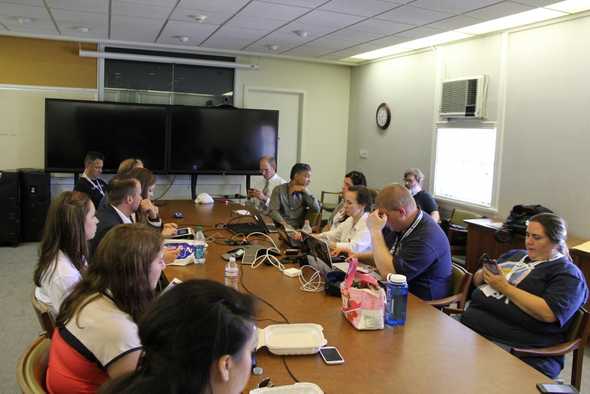Koushik Datta, Seedling Fund Manager for NARI
Koushik Datta is the Seedling Fund Manager and acting Deputy Director for the NASA Aeronautics Research Institute at NASA Ames Research Center. He spoke to the group of NASA Social attendees about the NARI last week. Here’s what he said.
The NASA Aeronautics Research Institute is looking for an innovate concept which will have a huge impact on aeronautics. Think of us as a venture capitalist fund that gives small amounts of money and get concepts from within and outside of NASA. The money is given to develop the concept by either the aeronautics industry outside of NASA or by NASA.
There are two funds, one for outside NASA and one for inside NASA. We get ideas from the public including universities and small and large businesses. Even citizen inventors. When NASA does a solicitation, they get about 200 new ideas. Those are narrowed down to about twenty. Any of those that NASA funds will receive between $100,000 and $200,000. They work on the proof of concept and do all the calculations and tests in the lab to show that it will work.
At the end of the year, they narrow it down to a third of them, about six or seven. They get about $350,000 to $400,000 and 18 months to work on it. The two and a half years of funding at a low level is nothing. Most aeronautic concepts take anywhere from fifteen to twenty years to get on an aircraft.
The types of concepts that have been funded is an Aerogel Based Antenna. Normally you see antennas made of metal. This is a very lightweight material that will be formfitting and reduce drag on the aircraft. You can also have many more antennas. It’s also a concept that can apply in the automotive industry.
Deicing on helicopter rotor blades is also another concept. Using the centrifugal force of the rotating rots and pumping air through the blades breaks up the ice.
As we use higher and higher efficient engines, they run at higher temperatures. Any cracks that form can be very dangerous. They are funding concepts that are self-healing. If a crack forms, the material will fill in the cracks and repair itself.
Electric aviation using heavy batteries adds weight to the aircraft. Using the concept of super capacitors, which will hopefully have as high an energy density, but much lighter in weight.
With all these concepts, they hope that at least one concept pays off per year. They haven’t funded enough projects to determine the percentage of return.
Ideas also come from other NASA centers. A Principle Investigator developed a sensor based on the housefly’s eye to measure aircraft wing deflections. That could be useful in future aircraft with flexible wings.
Captain Sullenberger landed the aircraft on the Hudson river. Someone proposed the idea of automating that kind of reasoning and have it available for UAV and aircraft. You would know what the surroundings are and what is a safe place to land.
The fund has only been functioning for a year. They need two and a half years before they know if any of the ideas will finish. They have solicitations throughout the year and anyone with an idea can write to them.
NARI gets ideas from large aerospace company that you would think have a lot of money, but in reality they don’t. The institute consists of about five people. They use other NASA employees with various expertise in subject matter to evaluate proposals. The small team doesn’t have enough knowledge and expertise across all areas. Most of the aeronautics are done in four NASA centers: Ames, Glenn, Langley, and Dryden.

